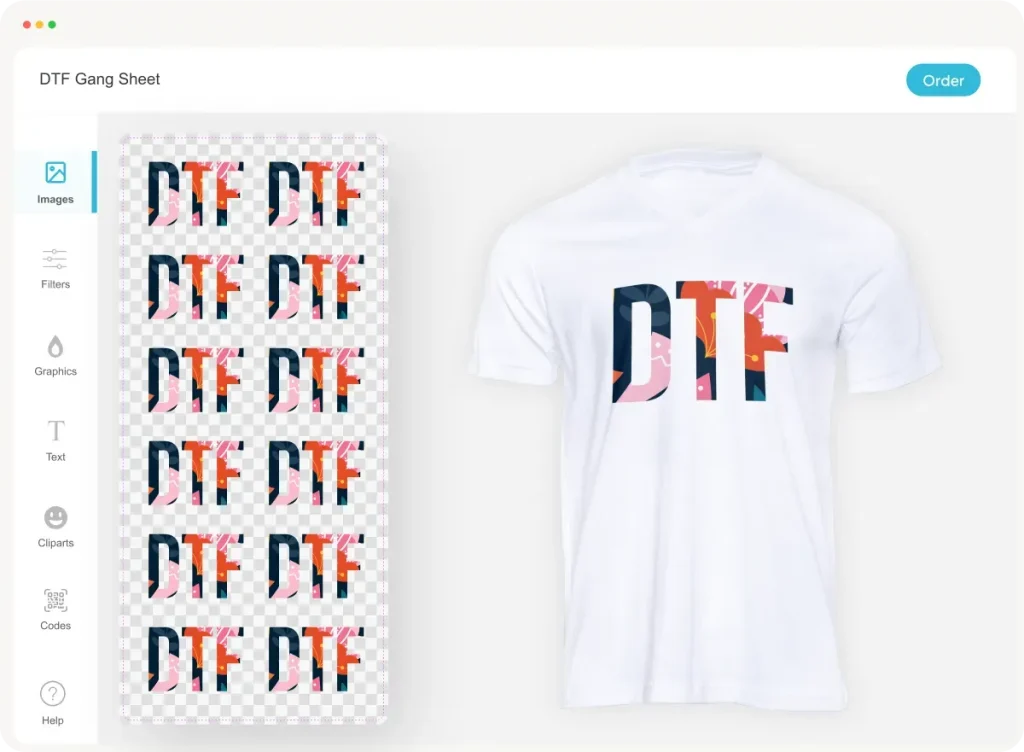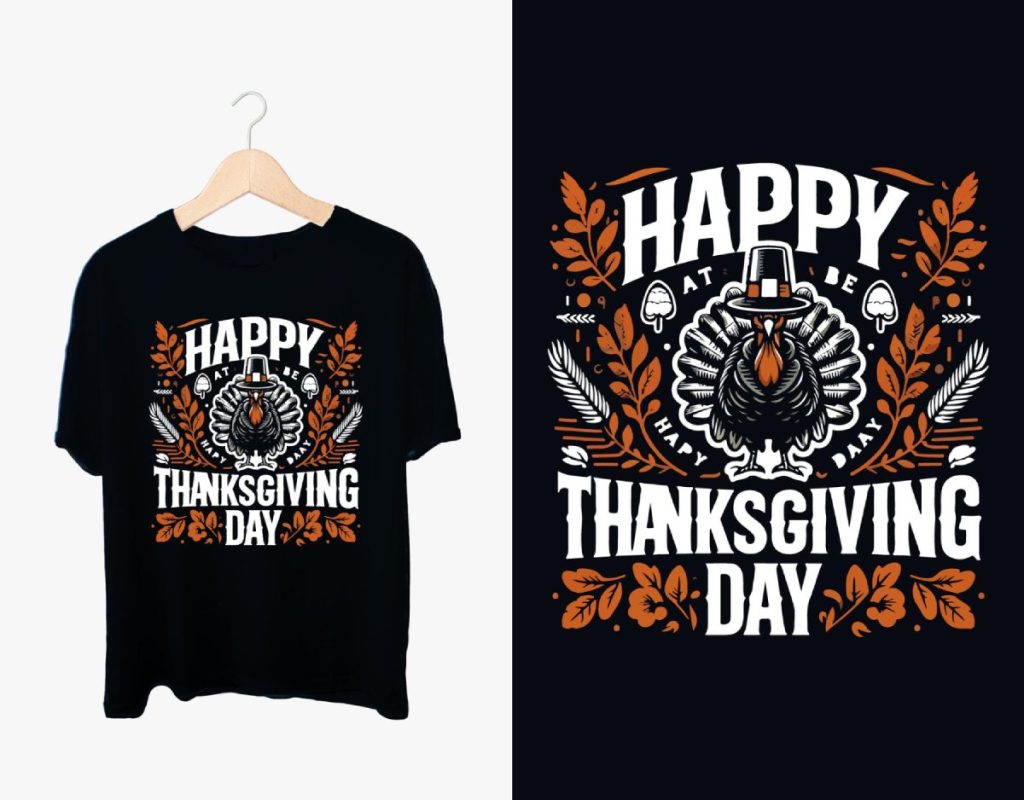DTF gangsheet builders represent a revolutionary development in the realm of custom apparel printing, harnessing the power of Direct to Film (DTF) printing. This innovative method allows designers to create intricate and vibrant designs that can be transferred onto various fabrics with ease. By utilizing a DTF gangsheet, users can efficiently arrange multiple designs on a single sheet, maximizing material usage and minimizing waste. Throughout this article, we will explore essential DTF printing tips and effective gangsheet creation techniques that will empower you to achieve stunning results. With the right DTF design software at your fingertips, the possibilities for creative expression in your custom apparel projects are virtually limitless.
Exploring the world of DTF printing opens up exciting avenues for innovative textile design, particularly through the use of gangsheet layouts. Known as direct film printing, this technique enables the seamless transfer of elaborate visuals onto fabrics, breathing life into custom apparel projects. The gangsheet concept, which consolidates multiple images into a single transfer sheet, enhances efficiency and creativity in the design process. From beginners to seasoned professionals, mastering DTF printing techniques and utilizing specialized software can significantly elevate the standards of your designs. Join us as we delve into the essentials of crafting impactful prints using these advanced tools.
The Basics of Direct to Film Printing
Direct to Film (DTF) printing is revolutionizing the custom apparel industry by providing a reliable means of transferring high-quality images and designs onto textiles. Unlike traditional methods, DTF printing involves intricate techniques where designs are printed on a unique film, which is then adhered to the fabric using heat and adhesive powder. This process not only allows for vivid colors and intricate details but also accommodates a wider array of fabrics, from cotton to polyester, making it a versatile choice for designers.
One of the standout features of DTF printing is its ability to produce full-color designs that are not hindered by the limitations of traditional printing methods. Whether it’s a multicolored graphic or intricate art, the DTF method ensures that each print is clear and impactful, capable of standing the test of time against washes and wears. For those interested in entering the custom apparel industry, understanding DTF printing is key to capitalizing on its growing popularity.
The Importance of Gangsheet Creation
In DTF printing, gangsheet creation is a strategic way to maximize efficiency and minimize material waste. A gangsheet, by definition, is a large transfer film sheet that contains multiple designs arranged meticulously for printing. This method not only streamlines the printing process but also reduces costs associated with printing individual pieces separately. By leveraging the gangsheet method, print shops can therefore improve their turnaround times while delivering high-quality prints, making it a favored approach among apparel designers.
Utilizing gang sheets also allows for creativity without the fear of excess materials being wasted. When creating designs, planners can optimize every inch of the gangsheet for various projects and orders, ultimately enhancing productivity. As consumers increasingly demand a diverse range of designs, mastering the art of gangsheet creation becomes indispensable for custom apparel printing businesses seeking to stay ahead of their competition.
Designing for DTF: Tips for Best Results
Creating designs for DTF printing requires specific considerations to achieve optimum results. First and foremost, using the right design software is crucial. Programs adapted for DTF printing, such as CADlink Digital Factory and FlexiSign, offer features that facilitate color management and design layout, which are vital for producing high-quality gang sheets. When designing, keep fonts and complex graphics in mind—simple yet striking designs often translate better onto fabric than overly intricate details.
Another key tip for success in DTF design involves anticipating the printing settings and materials you’ll be using. Understand the fabric type, as different materials might require different ink densities and adjustments in printer settings. Additionally, utilizing the proper ICC color profiles for your printer can help ensure that colors are accurately represented in the final print, aligning closely with what was seen on the design screens during the setup.
Essential Tools for DTF Gangsheet Builders
To effectively create gang sheets, utilizing specialized tools and software is vital. A proficient DTF gangsheet builder software allows you to organize and layout your designs seamlessly, making it easy to identify which images will fit best on the sheet without compromising quality. Popular software options are essential for designers looking to optimize their workflow, such as CADlink Digital Factory, which integrates smoothly with DTF processes.
In addition to software tools, having a reliable printer set up specifically for DTF printing is crucial. Ensure that your printer can handle the complexities of DTF ink and monitor consistency in output quality. By investing in high-quality printing equipment and suitable design software, you can set the groundwork for creating stunning and vibrant custom apparel that represents your creative vision accurately.
Color Management in DTF Printing
Color management is an integral part of successful DTF printing, as it ensures the accurate reproduction of designs onto the desired fabrics. Proper management begins with calibrating your printer settings for diverse fabric types and ensuring that your designs maintain integrity throughout the printing process. Utilizing ICC profiles tailored for your specific printer will enhance color accuracy significantly, allowing designs to emerge bright and true to the original artwork.
Test prints are an indispensable step in color management. By conducting regular test prints, you can analyze color outputs, make necessary adjustments, and ensure that the final results meet client expectations. This practice not only mitigates the potential for costly mistakes but also elevates the overall quality of printed products, establishing your reputation as a quality-oriented custom apparel brand.
Navigating Current Market Trends in DTF Printing
As the custom apparel market embraces DTF printing, several trends are defining its landscape. A noticeable trend involves the inclination towards sustainable printing practices. Many creators and brands are shifting to eco-friendly paper and inks, highlighting a commitment to environmental responsibility while still delivering high-quality designs. This trend resonates with consumers who prioritize eco-conscious purchasing, making sustainable DTF printing a lucrative niche.
Moreover, the demand for personalization is soaring, with consumers seeking unique and tailored products that express their individuality. DTF printing allows businesses to cater to niche markets by offering small, custom orders, appealing to those who value exclusivity. Embracing these trends can help businesses effectively market their DTF printing services and ensure they remain relevant and competitive within an evolving industry.
Frequently Asked Questions
What is included in a DTF gangsheet builder and how does it work?
A DTF gangsheet builder typically includes software tools that enable users to create and organize multiple designs on a single transfer film. This process allows for efficient printing of various graphics simultaneously, reducing material waste and production costs. The builder simplifies the layout and print settings, ensuring designs transfer accurately during the DTF printing process.
What are the benefits of using DTF gangsheet builders in custom apparel printing?
Using DTF gangsheet builders in custom apparel printing maximizes efficiency by allowing the printing of multiple designs on one sheet, which saves time and reduces costs. This approach also lowers material waste and enables high-quality outputs with intricate designs, making it ideal for custom orders and small batch productions.
Which DTF design software is recommended for creating gangsheet templates?
Recommended DTF design software for creating gangsheet templates includes CADlink Digital Factory, which offers excellent color management features, and FlexiSign, known for its versatility in arranging multiple designs. Both tools are tailored for DTF printing and help streamline the design layout process.
What are some essential DTF printing tips for successful gangsheet creations?
Key DTF printing tips include ensuring proper color management, using correct printer profiles for different fabrics, conducting test prints for accuracy, and optimizing print settings for ink density and resolution. Additionally, maintaining proper spacing and alignment of designs on the gangsheet will enhance the final output.
How do I manage colors effectively when using a DTF gangsheet builder?
Effective color management when using a DTF gangsheet builder involves setting accurate printer profiles based on the material and ink, using ICC profiles for color consistency, and conducting test prints. It is crucial to adjust color settings in the design software to ensure that printed colors match your original designs.
What trends are currently influencing the use of DTF gangsheet builders in the apparel industry?
Current trends influencing the use of DTF gangsheet builders include a growing demand for sustainable printing solutions with eco-friendly inks, and a focus on niche customization, where brands offer unique designs tailored to specific customer preferences. This shift allows greater creativity and personalization in the apparel market.
| Key Point | Details |
|---|---|
| Understanding DTF Printing | DTF printing allows for detailed fabric prints without traditional limitations, using a transfer film process. |
| What is a Gangsheet? | A gangsheet efficiently prints multiple designs on one sheet, reducing costs and waste. |
| Steps to Build a DTF Gangsheet | 1. Design Creation: Use software like Adobe Illustrator to layout designs optimally. 2. Utilize Software Tools: Leverage DTF-specific tools for better results. 3. Color Management: Set printer profiles and test prints for accuracy. 4. Print Settings: Adjust printer for optimal quality. 5. Transfer Process: Apply heat for bonding designs to fabric. |
| Current Market Trends | Growing demand for DTF printing with emphasis on sustainability and niche custom designs. |
| Learning Resources | Helpful blogs and guides such as the Printful Blog and ProWorld for deeper insights. |
Summary
DTF gangsheet builders empower users to elevate their design and printing capabilities. By comprehending the intricacies of DTF printing, you can master the essential techniques needed to create stunning designs. This guide not only addresses the fundamental aspects of DTF printing and gangsheet creation but also highlights current market trends that can intrigue your artistic pursuits. It’s time to embrace the flexibility and creativity offered by the DTF gangsheet builder. Whether you’re an experienced designer or a newcomer, harnessing the full potential of this innovative technology will set your custom apparel apart, allowing you to reach and captivate a wider audience.



